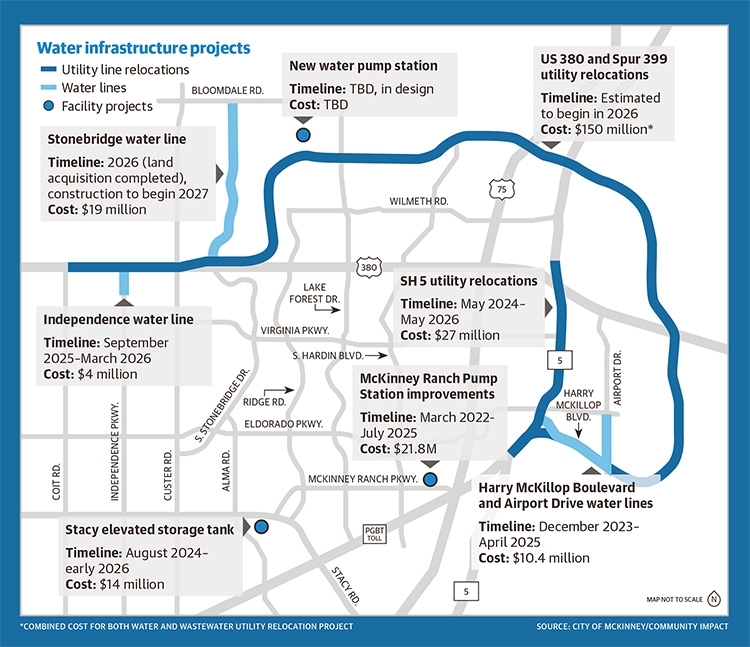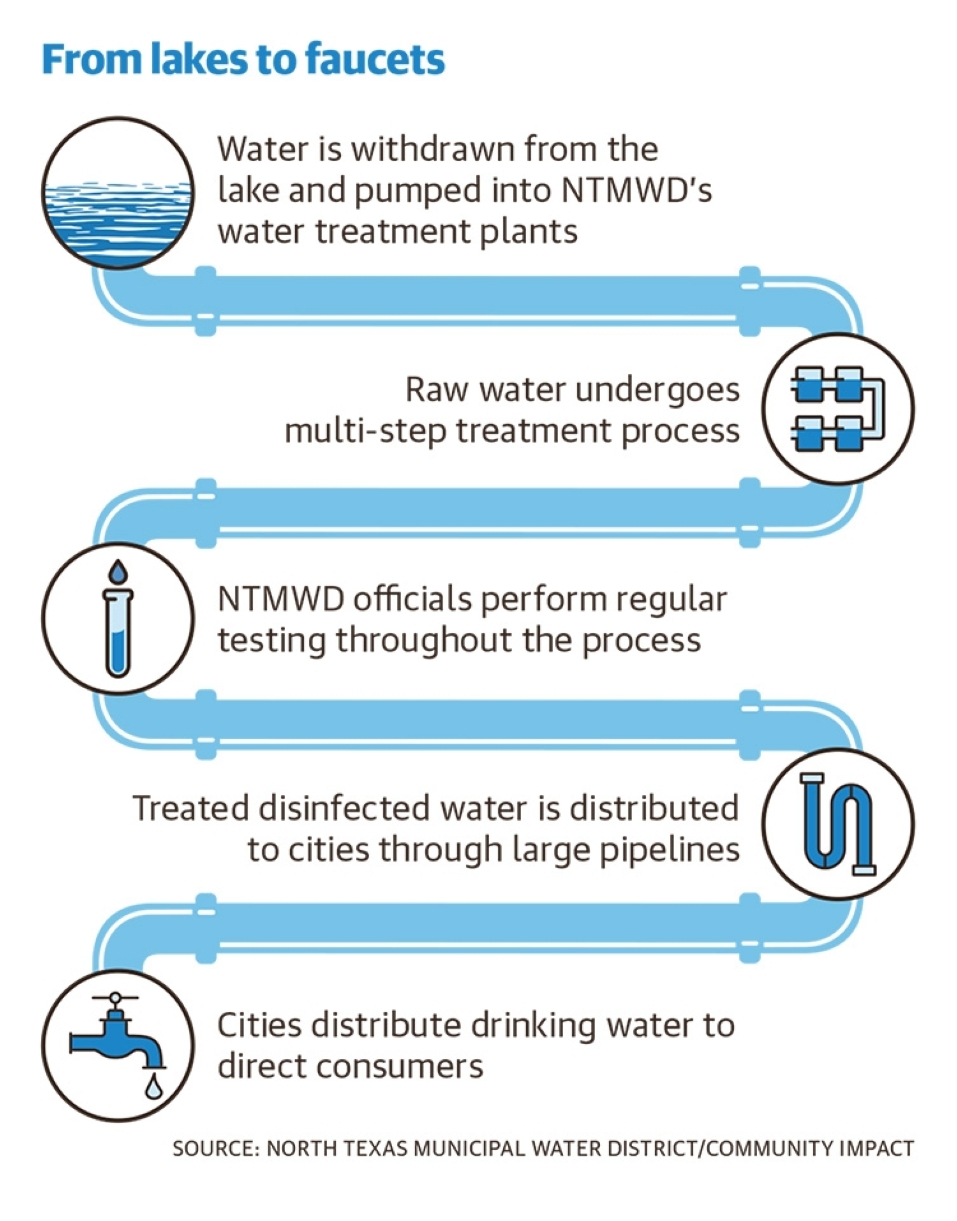The projects include new water lines and utility relocation work, as well as replacement of aging infrastructure and improvements to existing facilities across the city.
Director of Public Works Ryan Gillingham said city officials consult the community’s water master plan when assessing how to provide water as construction projects come online.
“The growth of our water system parallels the growth of the development community,” Gillingham said.
McKinney gets its water from wholesale water provider North Texas Municipal Water District, which charges $3.85 per 1,000 gallons for Fiscal Year 2024-25, a nearly 29% increase from FY 2020-21, according to the district’s website.
More than half of the fees collected via NTMWD’s wholesale water rates are reserved for covering the cost of capital projects. That includes new infrastructure to meet growing demand for treated water.
“We rely on North Texas [Municipal Water District] to be the regional water supplier, and as the region continues to expand, so does the need to provide more water to be able to support that additional growth,” Gillingham said.
The specifics

By the numbers
NTMWD services more than 2 million people in North Texas, which includes McKinney and 12 other member cities, as well as 34 customer cities that pay an extra five cents per 1,000 gallons.
Water use in McKinney has increased between 2014 to 2024, Communications Director Alex Johnson said. NTMWD measures water use from August to July each year, he said.
“We’ve seen a general increase in water consumption across our service area over the past 10 years—this is not unique to McKinney,” he said in an email.
The increase in water use is driven by ongoing population growth, Johnson said. Conservation efforts have “significantly reduced” use per capita in the region and NTMWD will continue to work for more reductions through conservation, he said.
“However, even with these conservation efforts, the amount of growth in our communities will continue to drive overall increased water use and require the development of new supplies,” Johnson said.
Collin County is projected to have a higher demand than supply as soon as 2030, according to the Region C 2022 Water Plan, prompting the district to take action to expand its infrastructure.Project funding
NTMWD officials plan to invest more than $5 billion over the next five years to meet demands of the growing population. Those funds will be used on a mix of new infrastructure projects, maintaining existing infrastructure and more.
For example, officials intend to award a construction contract this summer for expanding the Wylie Water Treatment Plant’s treatment capacity.A closer look
The district’s water treatment facility is located on more than 500 acres in Wylie and contains four different plants that treat water from Lake Texoma and Lavon Lake. Construction on the first plant finished in 1965 and the other three plants were constructed between 1972 and 2020.
Design is underway on a $142 million project to expand Wylie Water Treatment Plant IV’s treatment capacity from 210 million gallons per day, or MGD, to 280 MGD. Expansion is anticipated to finish in 2028 and will bring Wylie Water Treatment Plant’s total treatment capacity to 910 MGD.
NTMWD operates seven water treatment plants in total across its service area and can treat up to 946 MGD.
In order to expand capacity, new infrastructure is built to treat water, including treatment basins, pumps and pipelines, Johnson said.
“To ensure we have enough treatment capacity to meet demands in our service area, we’re continually planning for the future and working to meet that demand in a cost-effective manner for our member cities and customers who buy water from us,” Johnson said.
Besides infrastructure maintenance and expansion, officials are also eyeing new water sources.
“While water conservation and reuse will make up about 45% of our future supplies, we’ll still need to bring in new water supplies to meet demand in our growing region,” Johnson said.
Strategies for meeting future water demand are partly determined by the Region C Water Planning Group, which released a draft of its latest report in February.

Lake O’ the Pines, a nearly 17,000-acre lake about 120 miles east of McKinney, was recently recommended by the planning group as a new supply source for NTMWD. Moving water from the lake to NTMWD’s service area has been listed as a potential strategy in the state water plan since 2007.
“We believe that this is a prime example of a water project that would make better use of the state’s existing water resources,” Johnson said. “Moving water from areas of abundance to areas where demand is high will help water providers keep up with the state’s booming population growth and support our dynamic economy.”
The lake could supply between 50-100 MGD per day to NTMWD’s service, according to a Feb. 27 board of directors presentation. Negotiations are underway for NTMWD to purchase or lease water from the Northeast Texas Municipal Water District, Jenna Covington, NTMWD executive director and general manager, said during the meeting.
“As with any contract negotiation, there are limits to what we can share at this time,” she said. “Once a draft agreement is reached, the public will have the opportunity to review the details of the agreement and participate in open discussion before any partnership between the two water districts is approved.”
Infrastructure would also have to be built for transporting the water to NTMWD. Officials are proposing 104 miles of 78-inch pipeline running from the lake to NTMWD’s Tawakoni Water Treatment Plant.
“The safe, reliable delivery of water to the citizens of McKinney is one of the most important things that we do,” Gillingham said. “It's a critical part of everyday life. The operation of that and the ability to deliver water every day reliably is important, but it's also very difficult.”






